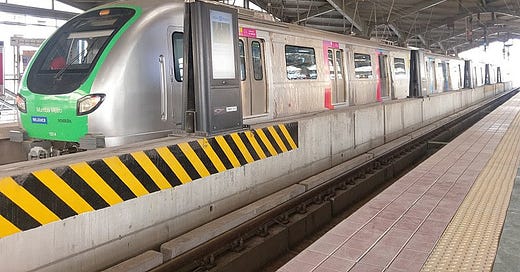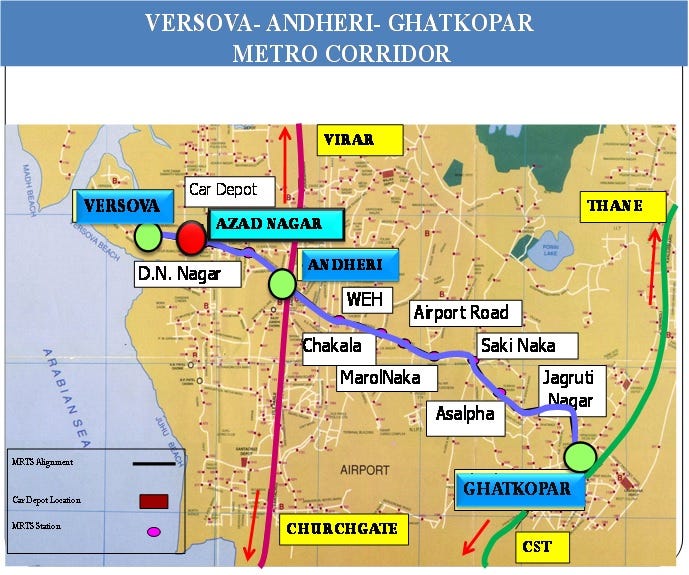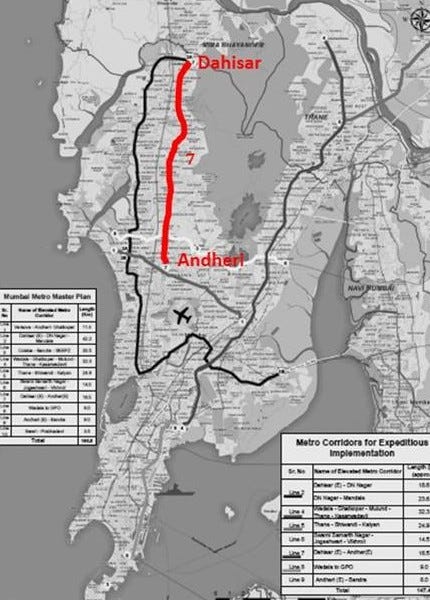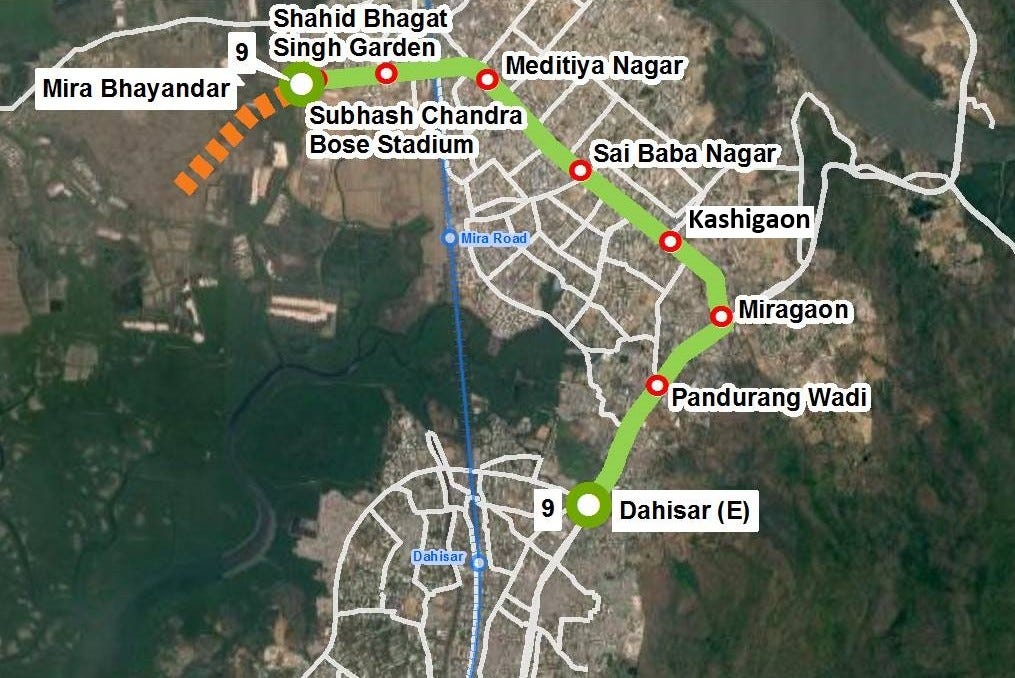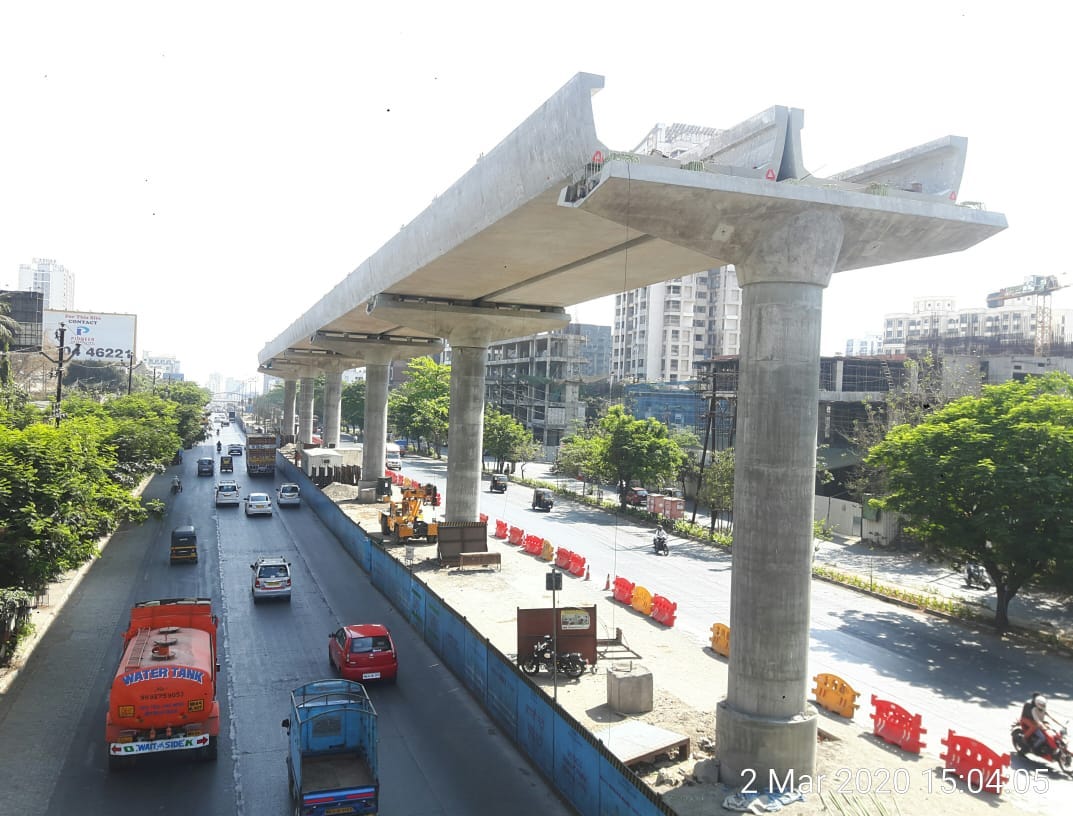All Mumbai Metro Lines Explained
With Necessity, Benefits and Criticism of the Mumbai Metro Network
Introduction
Mumbai is one the most populated cities in the world with a metropolitan population of above 2 crores. Yet, transportation infrastructure in the financial capital of India is not up to the mark. Seemingly endless traffic snarls on roads and jam-packed trains have become a usual sight for Mumbaikars.
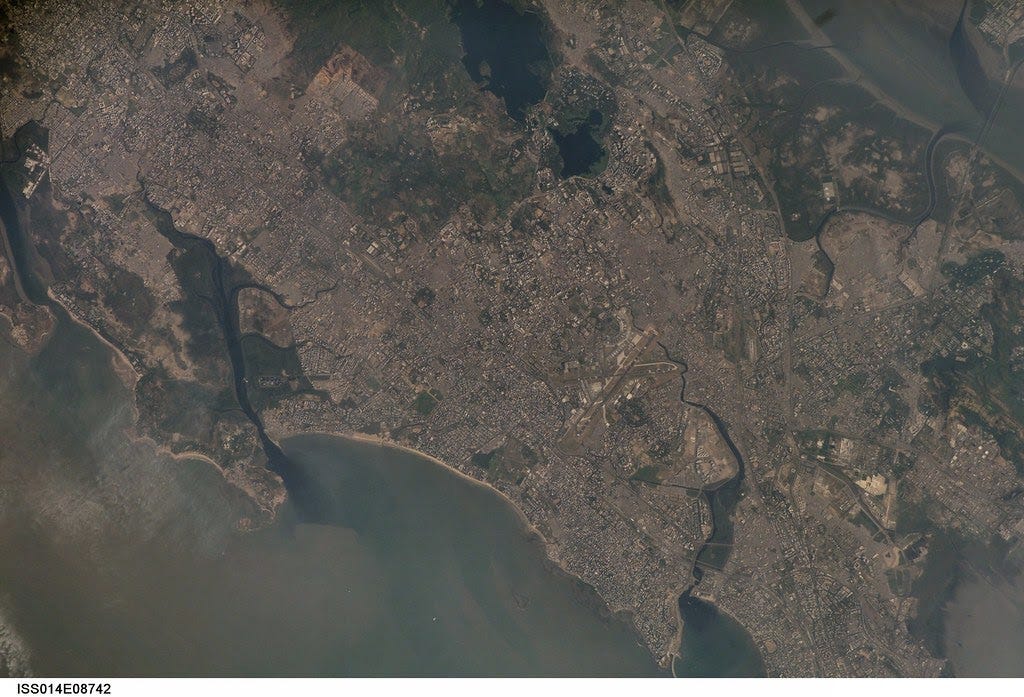
Immense population growth has caused the existing transportation infrastructure to become insufficient for citizens' needs. To alleviate the current situation as well as to make Mumbai a future-ready city, an enormous metro network is being developed. Mumbai Metro is among the most ambitious infrastructure overhauls in the country, with a planned network of 14 metro lines, of which 7 are currently under construction.
Why Mumbai Metro?
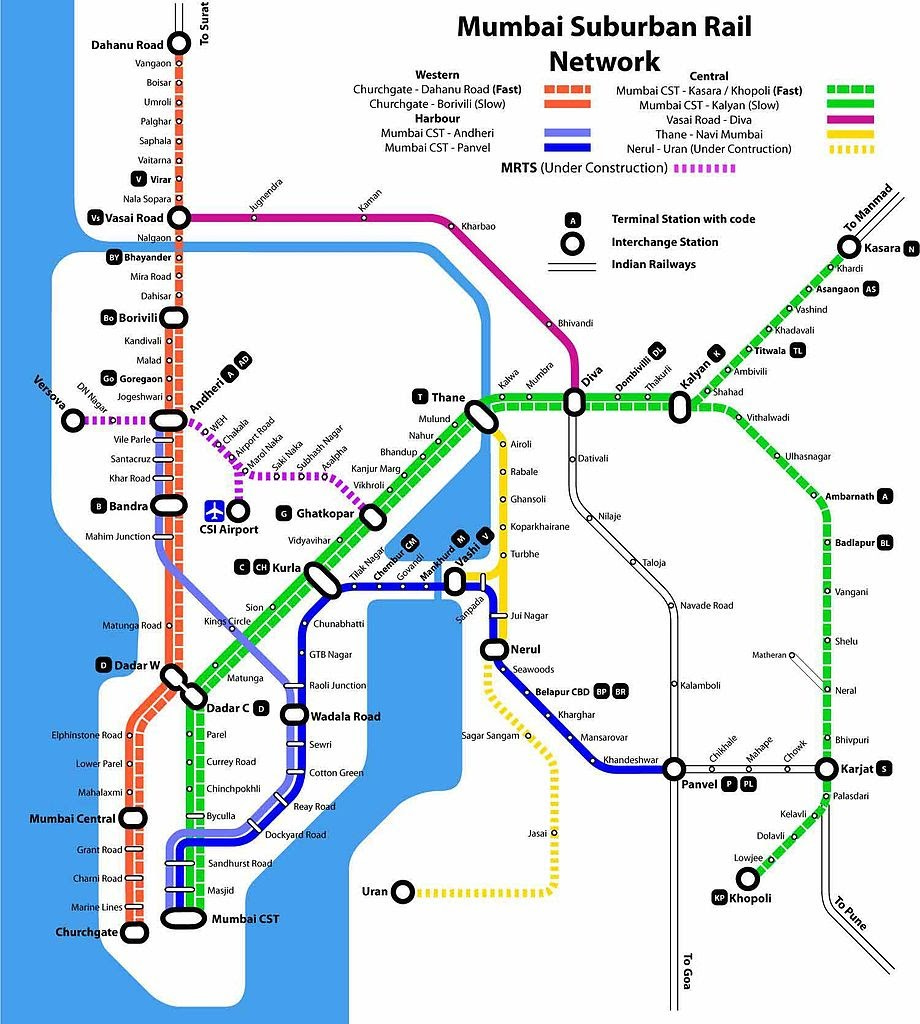
Following points explain the necessity of a mass rapid transit system ('Metro' system) in Mumbai:
1. The existing road network and suburban rail system are under severe stress due to rapid population growth in previous decades. The railway network carries over 70 lakh passengers in a day.
2. The public bus (BEST) system's role is limited to providing feeder services to railways and is inadequate to meet growing demands.

3. Many localities in the island city are simply not connected by the existing railway lines, which were planned in the earlier centuries.
4. The suburban railway network was not built to rapid transit standards.
To overcome the above problems, a vast metro network has been planned with the vision of providing a fast, environment friendly and economical means of public transport. Mumbai Metro will also provide mass rapid transit to citizens for last-mile distances and serve areas not connected by the existing railway network.
The Mumbai Metro Network
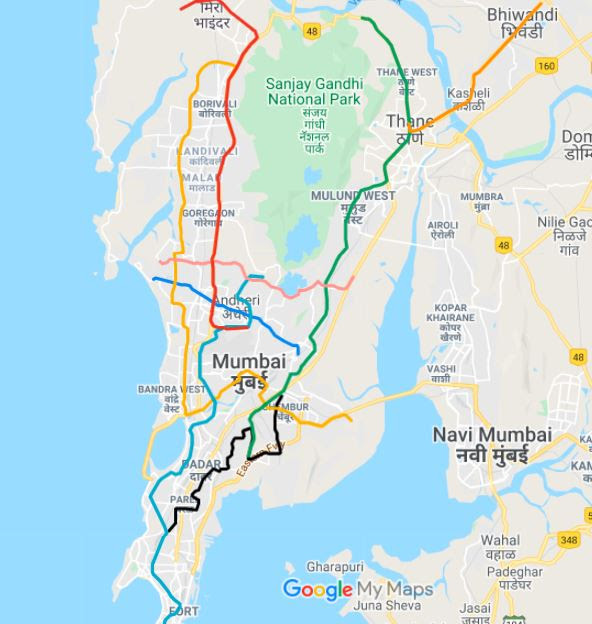
The metro system currently consists of fourteen metro lines. Of these, Line 1 is operational while seven lines (Lines 2, 3, 4, 5, 6, 7 and 9) are under construction. One line (Line 8) is in the planning stage and five lines (Lines 10, 11, 12, 13 and 14) have been granted preliminary approval. Once completed, the Mumbai Metro network will service about 280 stations, spanning a length of more than 350 km (about 25% underground, a miniscule portion at-grade and rest elevated).
Separately, a metro network is being planned and developed in Navi Mumbai by the City and Industrial Development Corporation (CIDCO). Line 1 of Navi Mumbai Metro is nearing completion, with a number of other lines presently in the planning stage. On completion, the total length of Navi Mumbai Metro would be over over 100 kms.
The foundation stone for Mumbai Metro was laid in 2006. However, construction work began only in 2008 and Line 1 commenced operation in June 2014. Line 1 of Mumbai Metro is operated by Mumbai Metro One Private Limited (MMOPL). The completely underground line 3 will be built by Mumbai Metro Railway Corporation Limited (MMRCL). All the other lines are being developed by the Mumbai Metropolitan Region Development Authority (MMRDA). Let us go through the details of each line of the metro network individually.
Mumbai Metro Line 1 (Blue Line)
Route: Versova-Andheri-Ghatkopar
Length: 11.40 km
Stations: 12
Underground/Elevated: Elevated
Status: Operational since 2014
Estimated Cost: Rs. 2,356 Crores
Metro Line 1 is a fully elevated 11.40 km corridor providing connectivity between Eastern and Western suburbs of Mumbai. It has efficient interchanges at Andheri and Ghatkopar stations along Western and Central railway lines respectively. Aligned along one of the busiest routes in Mumbai, the Blue Line cuts travel time between Versova and Ghatkopar from 71 minutes to only about 21 minutes.
The Blue Line connects MIDC, SEEPZ and a number of commercial and industrial complexes, and has a daily ridership of about 4 lakh passengers. The line is operated by Mumbai Metro One Private Limited (MMOPL), a joint venture of Reliance Infrastructure, MMRDA and RATP Transdev Asia. Opened in June 2014, it is the only metro line currently operational in Mumbai.
Mumbai Metro Line 2A (Yellow Line)
Route: Dahisar-D. N. Nagar
Length: 18.589 km
Stations: 17
Underground/Elevated: Elevated
Status: Scheduled to operate from January 2022
Estimated Cost: Rs. 6,410 Crores
Metro Line 2A is aligned along the Western suburbs and connects D. N. Nagar in Andheri with Dahisar. The line shall supplement and provide interconnectivity to Western Railway, Western Express Highway, and Metro Lines 1, 2B, 6 and 7. Line 2A shall reduce travel times by 50-75% depending on road conditions.
The fully elevated line shall offer a convenient transit means along the Western suburbs and facilitate efficient interchange with suburban rail and MRT systems at both termini. With work almost complete, operations on the Yellow Line are scheduled to commence from January 2022.
Mumbai Metro Line 2B (Yellow Line)
Route: D.N. Nagar-Mandale
Length: 23.643 km
Stations: 20
Underground/Elevated: Elevated
Status: Under Construction
Estimated Cost: Rs. 10,986 Crores
Metro Line 2B is designed to connect Western and Eastern suburbs and decongest lateral roads of the city. The line shall provide interconnectivity among Western and Eastern Express Highways, and have interchanges with Western Railway, Central Railway, Monorail, and Metro Lines 1, 2A, 3 and 4. It shall reduce travel times by anything between 50% and 75% depending on traffic conditions.
On completion, the fully elevated line shall provide an easy and efficient mode of transport between Mumbai's Western and Eastern suburbs. A dedicated depot for line 2B is planned at Mandale in an area of 22 hectares. The line is currently under construction and about 10% work is complete till date.
Mumbai Metro Line 3 (Aqua Line)
Route: Colaba-Bandra-SEEPZ
Length: 33.5 km
Stations: 27
Underground/Elevated: Underground
Status: Under Construction
Estimated Cost: Rs. 30,000 Crores
Metro Line 3, which will run fully underground from Colaba to SEEPZ, is the most ambitious and costly line in the Mumbai Metro network. It aims to supplement the inadequate suburban railway system. The line will have five interchange points for suburban railway and one each for Monorail and Metro Line 1. It is designed to decongest the traffic situation in Greater Mumbai.
On completion, the Aqua Line would connect 6 business districts, 30 educational institutes, 30 recreational facilities and domestic as well as international airport termini. A joint venture, Mumbai Metro Rail Corporation Limited (MMRCL) has been constituted between Government of India and Government of Maharashtra on a 50:50 equity basis solely for the Line 3 project. Two-thirds of construction work on the line has been completed till date.
Mumbai Metro Line 4 (Green Line)
Route: Wadala-Kasarvadavali
Length: 32.32 km
Stations: 32
Underground/Elevated: Elevated
Status: Under Construction
Estimated Cost: Rs. 14,549 Crores
Metro Line 4 shall run from Wadala in the Eastern suburbs to Kasarvadavali in Thane and provide interconnectivity among Eastern Express Highway, Central Railway, Monorail, and Metro Lines 2B, 5, 6, and 8. The line shall cut travel times by about 50-75% depending on road conditions.
The Green Line shall connect important commercial centers, government offices and geographical landmarks. Dedicated depots are planned at Owale and Godrej land on areas of 20 hectares and 15 hectares respectively. Work on the line is currently about 30% complete.
Mumbai Metro Line 5 (Orange Line)
Route: Thane-Bhiwandi-Kalyan
Length: 24.9 km
Stations: 15
Underground/Elevated: Elevated
Status: Under Construction
Estimated Cost: Rs. 8,416.51 Crores
Metro Line 5 shall provide connectivity in Thane district, easing travel between Thane and Kalyan. It shall ofer interchanges with Central Railway and Metro Line 4. It is aimed at reducing travel times by anything between 50% and 75%.
The Orange Line will provide rapid transit access to commercial centers, government bodies and geographical landmarks in Thane, Bhiwandi and Kalyan. Work on the 24.9 km elevated line is about 30% complete.
Mumbai Metro Line 6 (Pink Line)

Route: Swami Samarth Nagar to Vikhroli (EEH)
Length: 15.31 km
Stations: 13
Underground/Elevated: Elevated
Status: Under Construction
Estimated Cost: Rs. 6,716 Crores
Metro Line 6 connects Jogeshwari in the Western suburbs with Vikhroli in the East, and is designed to decongest traffic on the lateral roads connecting the suburbs of Mumbai. Interchange facilities shall be provided with Metro Lines 2, 3, 4 and 7 at different locations. Completion of the fully elevated Line 6 shall result in immense journey time savings between Western and Eastern Express Highways.
Much of the alignment passes through the median of Jogeshwari-Vikhroli link road (JVLR) and the line will interconnect Jogeshwari, Western Express Highway, Powai and Vikhroli. The line is currently under construction, with about 35% project work complete.
Mumbai Metro Line 7 (Red Line)
Route: Andheri East-Dahisar East
Length: 16.475 km
Stations: 13
Underground/Elevated: Elevated
Status: Scheduled to operate from January 2022
Estimated Cost: Rs. 6,208 Crores
Metro Line 7 shall connect the Western, Central, and Northern suburbs of Mumbai, and provide interconnectivity among Western Express Highway, Western Railway and Metro Lines 1, 2 and 6. It shall reduce travel times by anything between 50% and 75% depending on road conditions.
The line shall offer fast and efficient connectivity to Mumbai International Airport (CSMIA), SEEPZ, National Park and commercial and geographical landmarks. A dedicated depot is planned at Dahisar on an extent of 15 hectares. With work nearly complete, Line 7 is scheduled to open for public early next year.
Mumbai Metro Line 8 (Gold Line)
Route: CSMIA-NMIA Airport
Length: ~40 km
Stations: 8
Underground/Elevated: Elevated
Status: In Planning Stage
Metro Line 8, also called as Gold Line, is the Airport Express Line between Mumbai and Navi Mumbai. It will offer direct connectivity from CSMIA Airport in Mumbai to NMIA Airport in Navi Mumbai. The 40 km (25 mi) line will be fully elevated. Eight metro stations have been proposed on this line. The line is currently in planning stage.
Mumbai Metro Line 9 (Extension of Line 7)
Route: Dahisar (East)-Mira Bhayandar
Length: 13.581 km
Stations: 10
Underground/Elevated: 11.386 km elevated and 2.195 km underground
Status: Under Construction
Estimated Cost: Rs. 6,518 Crores
Metro Line 9 is the northward extension of Line 7 from Dahisar upto Mira-Bhayandar. While most of the line will be elevated, a small part of it will run underground. The line shall provide rapid transit in the North-western suburbs and cut travel times by 50-75% depending on road conditions.
It shall supplement Western Express Highway, Western Railway line and Metro Lines 2A and 7. A maintenance depot has been planned at Mira-Bhayandar on an extent of 20 hectares. The line is currently under construction and about 12% work has been completed.
Mumbai Metro Lines 10-14
Lines 10, 11, 12, 13 and 14 of the Mumbai Metro network are currently in the initial stages. Development of these lines has been approved by government agencies and Detailed Project Reports (DPR) are being prepared for each of the lines. Following are the available details for these lines.
Line 10
Route: Gaimukh-Shivaji Chowk (Mira Road)
Length: 9 km
Stations: 5
Underground/Elevated: Elevated
Line 11
Route: Wadala-CSMT
Length: 14 km
Stations: 10
Underground/Elevated: Partly Elevated and Partly Underground
Line 12
Route: Kalyan APMC-Taloja
Length: 20.75 km
Stations: 17
Underground/Elevated: Elevated
Line 13
Route: Shivaji Chowk (Mira Road)-Virar
Length: 23 km
Stations: 20
Line 14
Route: Vikhroli (EEH)-Badlapur
Length: 45 km
Stations: 40
Navi Mumbai Metro Line 1

Route: CBD Belapur-Taloja-Khandeshwar
Length: 23.40 km
Stations: 20
Underground/Elevated: Elevated
Status: Under Construction
Estimated Cost: Rs. 4,163 Crores
Navi Mumbai Metro Line 1 will link CBD Belapur, Kharghar, Taloja, Khandeshwar railway station, and terminate at Navi Mumbai International Airport. The line shall have interchange points at Belapur, Kharghar and Khandeshwar railway stations.
Construction work on the first Navi Mumbai Metro line began in 2011. The line is being developed in 3 phases: (a) Belapur-Pendhar, (b) MIDC Taloja-Khandeshwar, and (c) interlink between Pendhar and MIDC. Phase 1 is set to be open partially in December 2021, and the complete Belapur-Pendhar phase is scheduled for commencement in December 2022.
Other 'Metro' Cities of India

As of 2021, thirteen Indian cities can boast of having an operational metro rail system, making India one of the largest rapid transit hubs in the world. With over 540 stations and 730 km of lines in operation, the total length of metro systems in India ranks fifth-highest in the world. A further 570 km of lines are currently in the pipeline. Metro lines in India mainly utilize standard gauge of 1,435 mm.
Kolkata Metro is the oldest metro system in the country, which became operational in 1984. Delhi has the largest and busiest metro network in India, which serves Delhi as well as nearby cities in the National Capital Region.
Apart from these, Bengaluru, Gurugram, Mumbai, Jaipur, Chennai, Kochi, Lucknow, Hyderabad, Noida, Ahmedabad and Nagpur are the other Indian cities in chronological order to have got their own operational metro rail systems. Further, Pune, Navi Mumbai, Kanpur, Bhopal, Indore, Patna, Agra, Surat, Meerut, Guwahati and Coimbatore have metro lines either in construction or planning phase.
Benefits of Mumbai Metro
Following are the envisaged benefits of Mumbai Metro:
1. Reduction in road traffic and decongestion in the suburban train system.
2. Development of a rapid, comfortable, reliable and safe transport means for citizens.
3. Connectivity between places not connected by existing railway system and reduction in travel times across the city.
4. Great reduction in air and noise pollution levels, in addition to enormous energy savings over time.
Criticism
Like any other infrastructure project, Mumbai Metro too has not had a smooth ride. The planning and construction of the metro network have sparked outrage from some experts and local residents for various reasons as listed below.
1. Shoddy Route Planning: Some metro lines have faced ire of local residents for poor alignment of routes. For instance, at a public consultation meeting, residents have questioned MMRDA on the planning of Line 6 route (Swami Samarth Nagar to Vikhroli), asserting that the line could have better served citizens had it been aligned through more populous areas.
2. Green cover loss: Implementation of the metro project will require cutting down or displacement of thousands of trees. Citizens have accused Mumbai Metro of having a poor success rate in tree transplantation. MMRCL itself has admitted that only 36% of trees transplanted by it have survived.
3. Unending Delays: Citizens have had to face numerous delays in the completion of metro projects due to several reasons such as delay in environmental clearances, slow construction work, lack of mobilization of funds, technical reasons and also the covid pandemic.
4. Cost Escalation: Frequent delays in implementation of project work have resulted in massive cost escalation. For example, the cost of Metro Line 3 has gone up from Rs 23,000 Crores to atleast Rs 33,000 Crores as a result of delays in implementation of project work.
5. Pollution: Construction of Mumbai Metro network is contributing to the already high levels of air pollution in the city. A research by World Resources Institute has revealed that construction of the metro lines is causing dust pollution, with almost 8% of total particulate matter in the city being emitted from metro construction works.
Conclusion
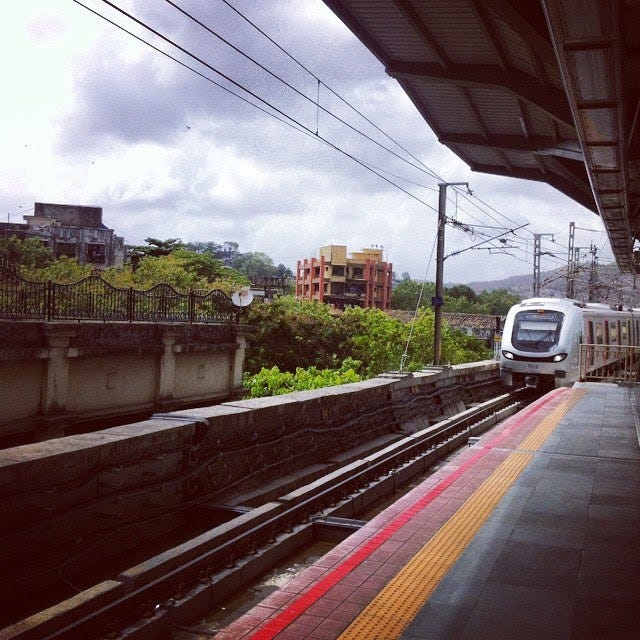
Criticism over planning and construction issues aside, Mumbai is in urgent need of a mass rapid transit system to supplement its existing transportation network. Mumbai Metro, no doubt, is set to be the biggest revamp to the city's infrastructure. With fourteen lines weaving through the city, the metro network is aimed at greatly resolving citizens' woes of congestion and overcrowding, while alleviating pressure from the existing road and railway systems.
In addition to offering a fast, reliable and convenient means of transport, Mumbai Metro will also help check air pollution levels in the city. The network will also interconnect localities which are not connected by the existing transportation systems. With reduced dependence of citizens on road and suburban rail systems, the transportation landscape in Mumbai is about to be transformed.
List of References 6
https://en.m.wikipedia.org/wiki/Urban_rail_transit_in_India#Rapid_transit_systems
https://mmrda.maharashtra.gov.in/metro-line-1
https://en.m.wikipedia.org/wiki/Navi_Mumbai_Metro
https://en.m.wikipedia.org/wiki/Mumbai_Metro
https://web.archive.org/web/20140220164819/http://202.54.119.40/projects_metro_rail.htm
https://www.hindustantimes.com/mumbai-news/mumbai-metro-6-residents-slam-mmrda-for-shoddy-planning/story-DIL8yzdPK0VgawWQR50jBP_amp.html
https://m.timesofindia.com/city/mumbai/mumbai-metro-construction-activities-causing-major-dust-pollution-suggest-findings/amp_articleshow/85985745.cms
https://www.indiatoday.in/india/story/over-60-trees-transplanted-by-mmrcl-dead-claims-aarey-activist-1620745-2019-11-20
https://www.mmrcl.com/

